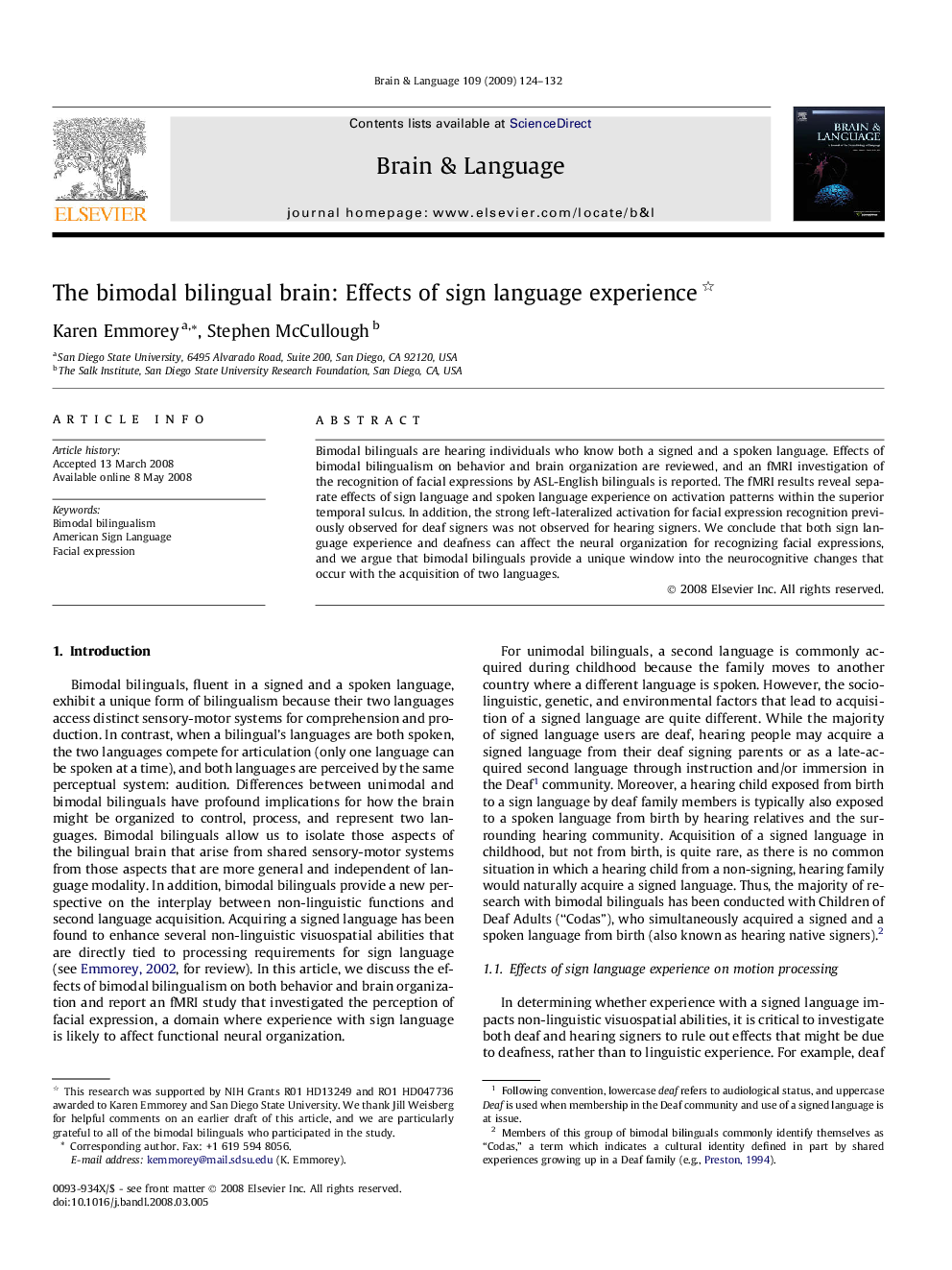| Article ID | Journal | Published Year | Pages | File Type |
|---|---|---|---|---|
| 925755 | Brain and Language | 2009 | 9 Pages |
Bimodal bilinguals are hearing individuals who know both a signed and a spoken language. Effects of bimodal bilingualism on behavior and brain organization are reviewed, and an fMRI investigation of the recognition of facial expressions by ASL-English bilinguals is reported. The fMRI results reveal separate effects of sign language and spoken language experience on activation patterns within the superior temporal sulcus. In addition, the strong left-lateralized activation for facial expression recognition previously observed for deaf signers was not observed for hearing signers. We conclude that both sign language experience and deafness can affect the neural organization for recognizing facial expressions, and we argue that bimodal bilinguals provide a unique window into the neurocognitive changes that occur with the acquisition of two languages.
